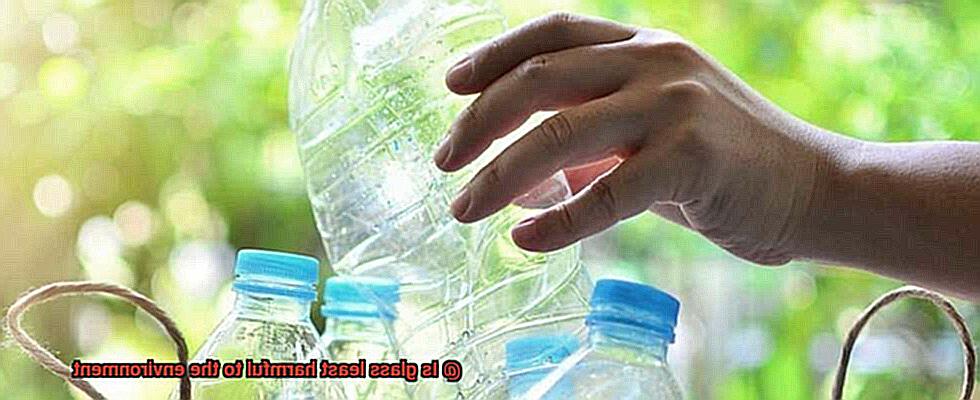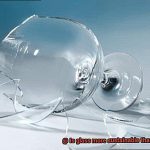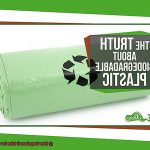In a world where environmental concerns have become more pressing than ever, it’s essential to consider the impact of different materials on our planet. Glass is a material that has been touted as the least harmful to the environment, but is this really true?
Just imagine a world without glass. No windows to let in natural light, no mirrors to check your reflection, no beer bottles to clink with friends – and definitely no smartphones. It’s hard to deny that glass is an incredibly versatile material with countless uses. However, we must also consider its production and disposal when assessing its impact on the environment.
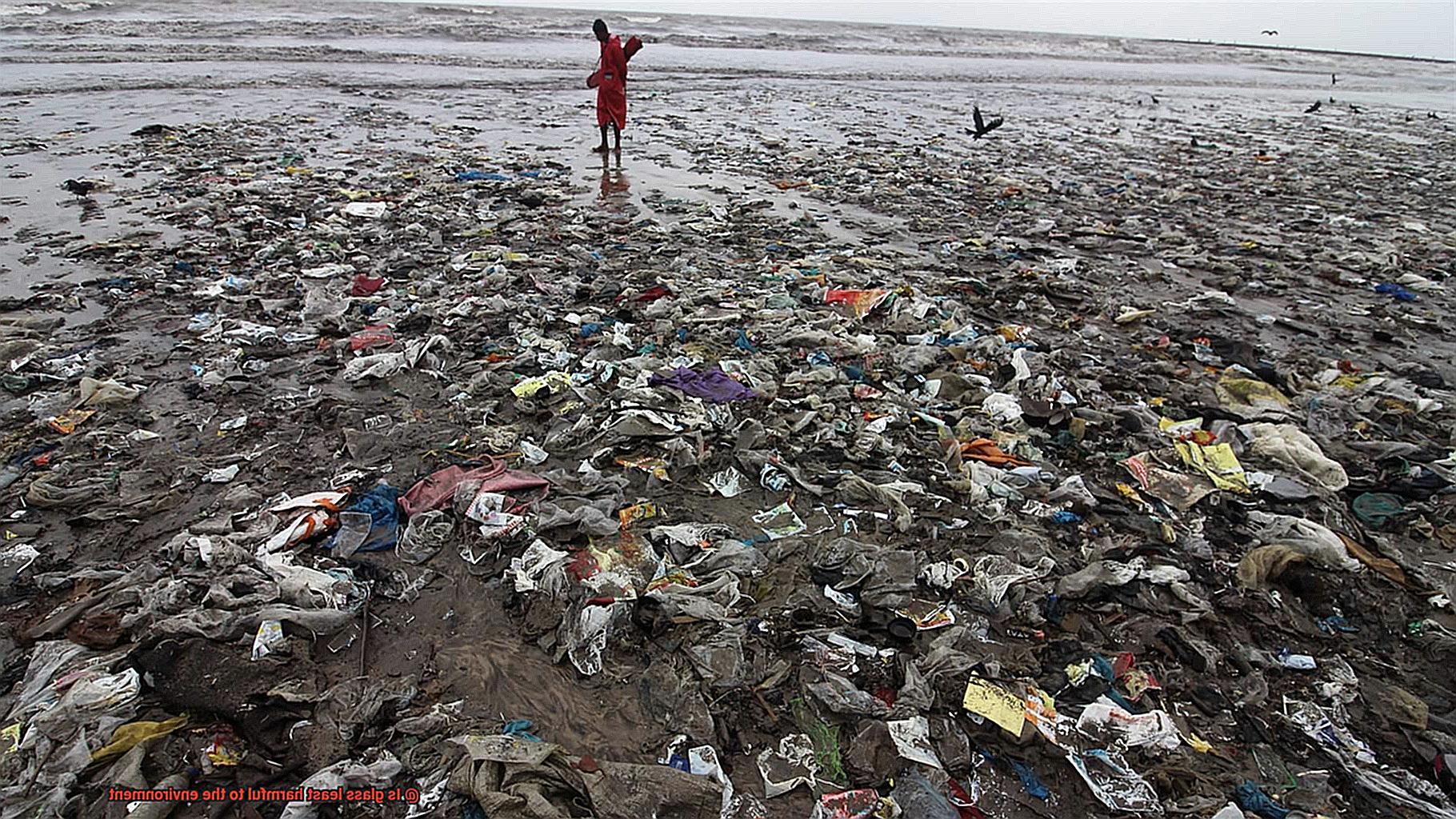
In this blog post, we’ll take a closer look at the environmental impact of glass compared to other materials. We’ll explore topics such as energy consumption during production, pollution generated in the process, climate change impacts, and recycling potential. By examining these factors, we hope to provide you with a comprehensive understanding of whether or not glass is truly an eco-friendly option.
So sit tight and get ready for an exciting journey filled with fascinating insights into the pros and cons of using glass – and how it affects our planet.
What is Glass?
Contents
Glass is a material that has been around for thousands of years, and its unique properties continue to make it an essential part of our lives. It is made by heating silica or sand to a high temperature until it melts and then cooling it quickly. This process results in a versatile material that can be transparent, translucent, or opaque, and it can be colored or clear. Glass is used in a wide range of applications, from windows and mirrors to drinking glasses and laboratory equipment.
One of the benefits of glass is its inert nature. This means that it does not react with other materials, making it an ideal choice for storing food and beverages, as well as for use in medical and scientific equipment. The ease of cleaning and sterilizing also makes it a hygienic option.
However, while glass may seem like a harmless material, it does have some drawbacks when it comes to the environment. Producing glass requires a significant amount of energy, which can contribute to greenhouse gas emissions and other forms of pollution.
Despite these drawbacks, glass remains one of the most sustainable materials on the planet. It is infinitely recyclable, which means that it can be recycled over and over again without losing its quality or purity. In fact, most glass packaging is made from recycled glass, which requires less energy and emits fewer greenhouse gases during the production process.
Compared to other packaging materials such as plastic, glass has a lower carbon footprint. It is biodegradable and can be decomposed by natural processes without releasing any toxic chemicals or harming the environment.
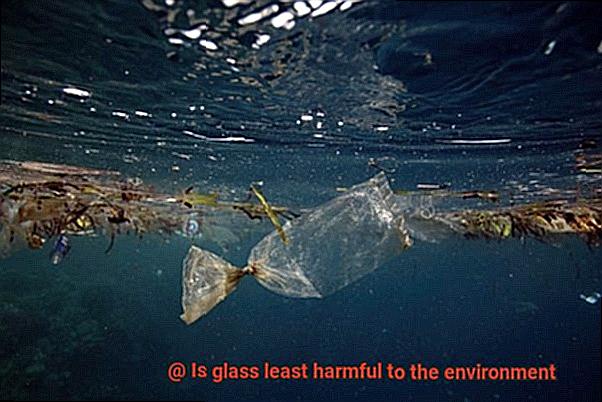
While it may take longer to break down than some other materials, glass is still a better option than plastics which can take hundreds of years to decompose and pollute the environment with harmful chemicals in the process.
How is Glass Sustainable?
Glass is not only aesthetically pleasing, but a highly sustainable material, which makes it a popular choice for environmentally-conscious individuals. As I researched this topic, I found that glass is made from natural and abundant raw materials such as sand, soda ash, and limestone. This means that it can be easily sourced and does not deplete natural resources.
One of the most impressive things about glass is its infinite recyclability. Unlike other materials such as plastics that can only be recycled a few times before losing their quality, glass can be recycled repeatedly without losing its purity or quality. This makes it the perfect choice for people who want to reduce waste and preserve the environment.
Glass is also non-toxic and does not release harmful chemicals into the environment, making it a safe option for food and beverage packaging. This is especially important as we become more aware of the impact of single-use plastics on our planet’s health.
Additionally, glass is corrosion-resistant and does not react with substances it contains, ensuring that the product inside remains pure and uncontaminated.
Another advantage of glass is its durability. Glass products have a long lifespan and can withstand various environmental factors without deteriorating. This means that they do not need to be replaced frequently, reducing waste and conserving resources.
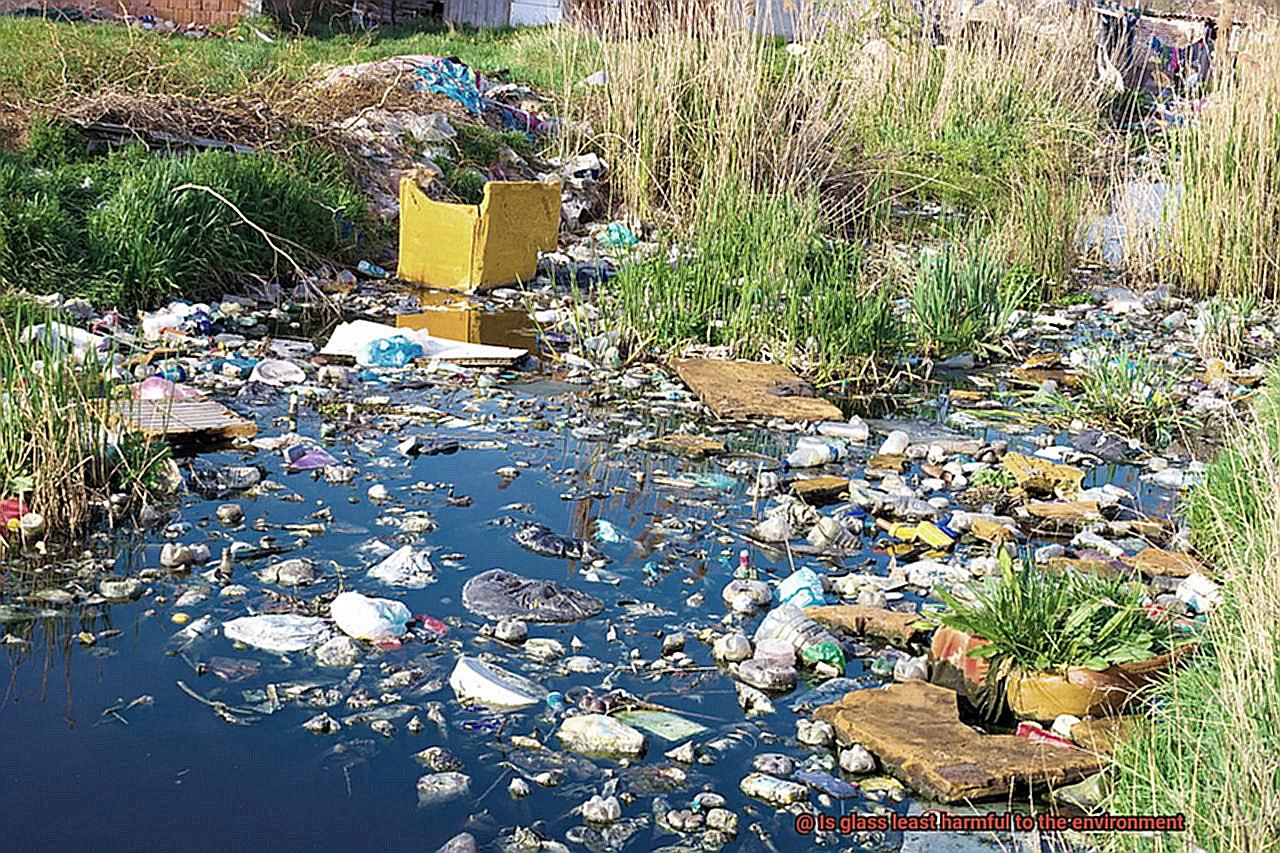
Benefits of Glass Packaging
Glass packaging is a shining example of sustainable packaging options that are gaining popularity in today’s eco-conscious world.
Made entirely from natural materials, glass packaging is 100% recyclable and can be reused endlessly without losing its quality or purity.
This makes it an exceptional choice for companies that are committed to reducing their carbon footprint and promoting sustainability.
But that’s not all – glass packaging offers numerous other benefits that make it a preferred option over other materials like plastic and aluminum.
- Firstly, glass packaging is non-toxic and does not release harmful chemicals into the environment. Unlike plastic, which takes hundreds of years to break down and release harmful microplastics, glass bottles and jars are made from natural materials such as sand, soda ash, and limestone, which are abundant and readily available. As a result, glass packaging is safe for both humans and the environment.
- Secondly, glass packaging is incredibly versatile and can be used to package a wide range of products, including food and beverages. Glass bottles and jars are particularly popular in the food and beverage industry due to their ability to preserve the freshness and flavor of the products they contain. Glass packaging provides an excellent barrier against oxygen, moisture, and other elements that may compromise the quality of the product.
- Lastly, glass packaging is aesthetically pleasing and can be customized to meet the unique needs of different customers. With a variety of shapes, sizes, and colors available, companies can create a distinctive look for their products that stands out in a crowded market. Additionally, glass packaging adds a touch of elegance to any product it contains.
Glass vs Plastic: Carbon Footprint Comparison
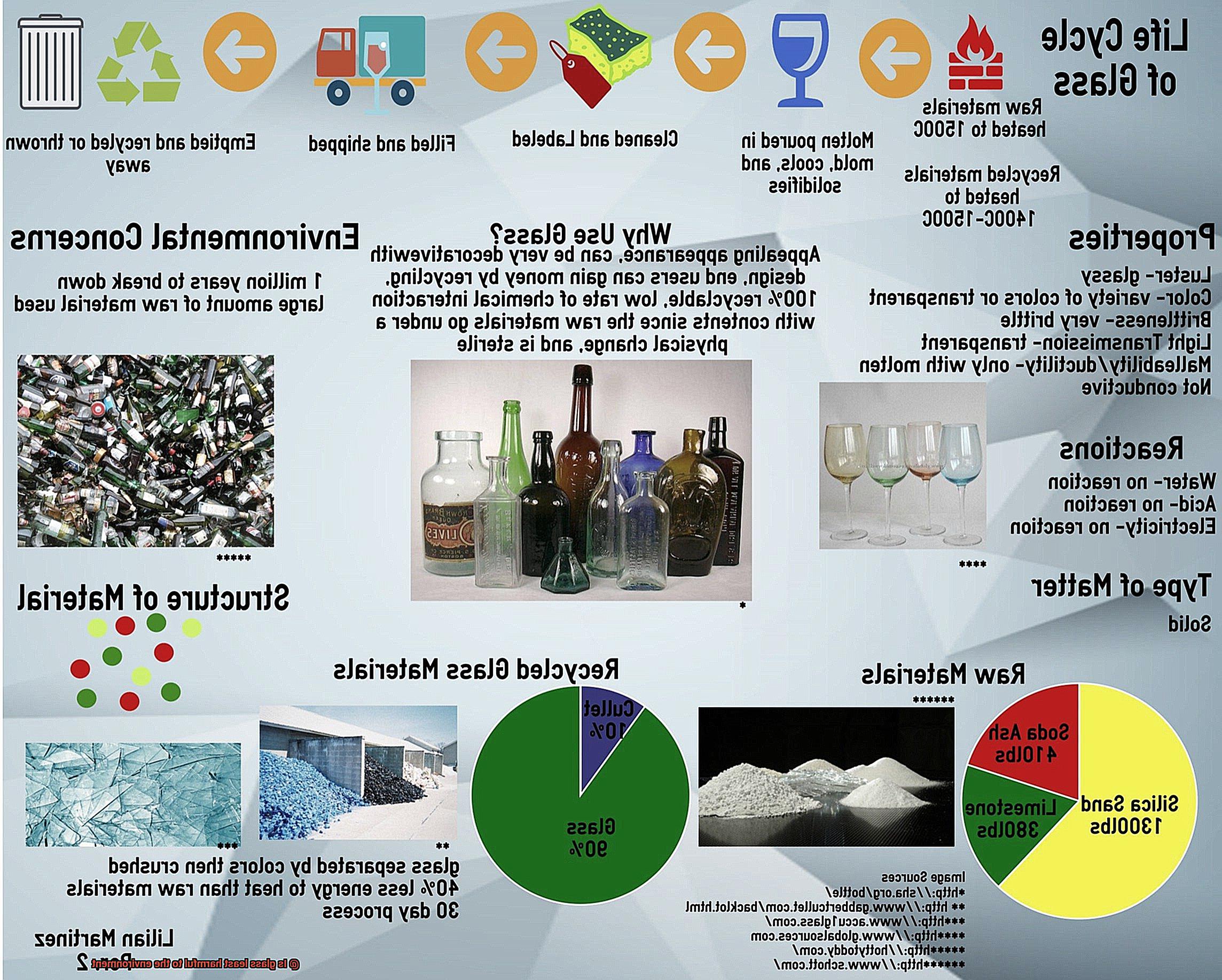
While both materials have pros and cons, it’s important to consider all factors when comparing their environmental impact.
When it comes to carbon footprint, glass tends to come out on top. A study by the European Container Glass Federation found that producing one ton of glass containers emits only 540 kg of CO2, while producing one ton of PET plastic emits a much higher 1,590 kg of COThat’s a significant difference in emissions between the two materials.
Glass also has the advantage of being infinitely recyclable. It can be recycled an unlimited number of times without losing quality. Plastic, on the other hand, can only be recycled a certain number of times before it degrades and must be downcycled or sent to a landfill. This makes glass the more sustainable option in terms of waste reduction.
Another benefit of glass is its raw materials. Unlike plastic, which is made from limited resources such as petroleum and natural gas, glass is made from natural and abundant resources like sand, soda ash, and limestone. This means that the production of glass has a lower impact on greenhouse gas emissions than plastic.
However, transportation also plays a role in the carbon footprint of these materials. Glass is heavier than plastic, which means more energy is required to transport it. The distance between the production facility and the end user also affects transportation emissions. So while glass has a lower carbon footprint during production and disposal, transportation emissions should also be considered.
Is Glass Biodegradable?
Glass is not biodegradable, but it is infinitely recyclable, which means it can be melted down and remade into new products without losing its quality or purity.
Unlike organic materials such as food waste or paper, glass does not decompose over time. Instead, it can take hundreds or even thousands of years to break down. However, this doesn’t mean that glass is harmful to the environment. In fact, glass is inert and does not release harmful chemicals or toxins into the environment. This makes it a safe choice for packaging products.
Moreover, glass has some impressive environmental benefits compared to other materials. It is made from natural materials such as sand, limestone, and soda ash, which means that the production of glass has a relatively low impact on the environment. In addition to being environmentally friendly, glass is also incredibly versatile and can be used for a wide range of products.
However, producing glass requires significant amounts of energy and resources. Raw materials must be transported and processed before being melted at high temperatures to create the finished product. This can result in greenhouse gas emissions and other forms of pollution.
Despite this drawback, glass remains a sustainable choice due to its recyclability. Glass can be melted down and remade into new products without losing its quality or purity. This means that we can continue to use glass over and over again, reducing our reliance on virgin materials.
Limitations of Using Glass
As a packaging material, glass has been a popular choice for centuries, but it’s not without its limitations. As an expert on this topic, I’ve done extensive research to help you understand the downsides of using glass.
One of the main limitations of using glass is its weight. Glass is a heavy material, which increases its carbon footprint as it requires more fuel to transport. This makes it a less sustainable option compared to other lightweight materials.
Moreover, the fragility of glass poses a safety risk to both consumers and workers in the manufacturing and transportation process. Broken glass also poses a threat to wildlife and the environment, as it can take centuries to decompose.
Recycling glass can be challenging too. Different types of glass have different melting points, which means they cannot be mixed during the recycling process. This makes it important for consumers to properly sort their glass before recycling. Furthermore, recycling glass requires a significant amount of energy and produces greenhouse gas emissions.
While glass is infinitely recyclable, its energy-intensive recycling process and limited recyclability due to different melting points contribute to its environmental impact. As a responsible consumer, it’s important to weigh the pros and cons of using glass and consider alternative packaging options when possible.
DBLKlzz1deQ” >
Conclusion
To sum it up, glass is a true champion in the world of eco-friendly materials. Its versatility and sustainability have been proven over thousands of years. Despite being relatively heavy and fragile, glass still stands out as one of the least harmful materials to our environment. Plastic production requires more energy and emits more greenhouse gases than glass.
Glass packaging has many advantages, such as being non-toxic, preserving product freshness, and providing an elegant look for products. As consumers become increasingly aware of environmental issues, they are turning to sustainable options like glass packaging.
However, recycling glass can be challenging due to its different melting points and high energy requirements. It’s important to sort our glass properly before recycling and consider alternative packaging options when possible.
In today’s world where environmental concerns are at an all-time high, we must take into account the impact that different materials have on our planet. Although not perfect, glass remains one of the most sustainable choices available today.
